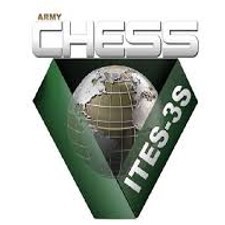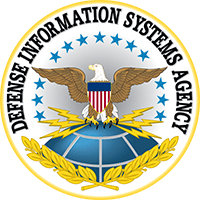Business data is growing exponentially – in volume, velocity and variety! Customer requirements, competition and innovation are driving rapid changes in business requirements and supporting business processes.
Decision makers, at all levels of an organization, require accurate, current, cohesive business information to glean actionable Business Intelligence (BI) and associated analytics and insights to make effective tactical and strategic decisions.
Business Intelligence is essential to agility and competitiveness. Simply stated – organizations that execute on big data and act on the resulting business intelligence thrive.
Most organizations recognize the value of big data. Unfortunately, many organizations are not yet realizing the full potential. The problem, however, is not with the enabling technologies – the technologies are stable and well understood. The problem lives with the business requirements.
Business requirements analysis for BI is very different than business requirements analysis for transactional systems – and requires business analysts with a unique, business-oriented (non-technical) set of business analysis skills, techniques and methods.
Traditionally, many organizations looked at BI from a technical rather than a business perspective. However, effective BI solutions require rigorous analysis of BI business requirements.
The 10 most frequently asked questions, by our clients and by participants in our business and systems analysis training programs, regarding BI business intelligence requirements analysis are summarized below.
These 10 FAQs provide an excellent perspective that your organization can use as guidance to improve the quality, speed, and effectiveness of your organization’s BI requirements process.
#1: What is the difference between Big Data and Business Intelligence?
The definition of Big Data and Business Intelligence (BI) vary considerably in the IT industry. However, there are several key distinctions between Big Data and BI that are essential in connection with BI requirements analysis.
There are three terms / concepts that are typically associated with Big Data – Volume, Velocity and Variety.
- Volume represents the sheer amount of digital data generated within an organization and generated external to an organization that is of interest / useful to an organization.
- Velocity represents the speed in which data is generated (internally and externally) and an organizations ability to identity, consume, process and make use of the data for decision making.
- Variety is the recognition that digital data comes in many forms such as text, images, geospatial coordinates, etc.
Big Data, very simply defined, is collectively the tools, techniques and technologies to identify, capture and process the volume, velocity and variety of the flow of digital data.
Business Intelligence, very simply defied, is the ability to create value (better-faster decisions, glean insight, etc.) from the volume-velocity-variety of data. Think of BI as a subset of the more overarching concept of Big Data.
#2: What is the difference between a business requirement and a functional requirement?
A business requirement is something a business needs to do or accomplish (a work activity/task) to operate the business on an on-going basis. A business system functional requirement specifies how a business requirement is/could be supported by business system functionally via application software and/or business intelligence software.
Business system functional requirements are a subset (more detailed view) of business requirements from a user functionality perspective. Functional requirements are defined in terms of the desired/required interactions between business end users and the target application.
#3: What is the difference between a transactional business requirement and a business intelligence (BI) business requirement?
Transactional business requirements represent the business tasks / procedures that a business needs to perform. Business Intelligence (BI) business requirements analysis represent business questions that business decision makers (work activities that require knowledge and judgment) need to answer in order to make effective decisions.
#4: What is the difference between a tactical BI requirement and a strategic BI requirement?
Tactical BI requirements support decision making in the moment or in the short term such as the daily product backorder report. Tactical BI requirements are driven by on-going operational business processes. Strategic BI requirements support longer-term decision making often involving trends. Strategic BI requirements are driven by enterprise and business functional unit level goals and objectives.
#5: What is the impact of BI requirements on BPM (Business Process Management)?
BI business requirements provide the metrics and key performance indicators necessary to identify potential gaps in business process (cycle times, defects, root causes, etc.) or patterns of behavior (credit card fraud detection) to analyze in connection with business process improvement.
BI business requirements enable improvements in business process performance through rapid pattern recognition / matching. Example – Ability to suspend a credit card when unusual activity is detected.
When BI business requirements are defined in the context of business processes, organizations are able to rapidly glean important business insight and have the ability to proactively respond (rather than react) to industry trends, regulatory changes, competition, etc.
#6: How are conceptual BI Business Requirements different from physical BI Business Requirements?
Conceptual BI requirements represent the business / business user perspective regarding the requirement. Conceptual BI Requirements are typically defined in terms of business questions and are depicted via logical data models, dimensional models, activity diagrams, data access needs (i.e., response times, structured v. unstructured queries, metric calculations) and ETL process maps.
Physical BI requirements represent how the Conceptual BI requirements will be implemented from a business technical perspective. Physical BI requirements are typically depicted via star schemas, physical database designs, source system physical data models and ETL system transformation and interactions.
#7: What is the difference among a Dimensional Model, Business Data Model and a Star Schema?
Dimensional models are utilized for BI business requirements analysis. Each dimensional model depicts / defines a single BI business requirement. Dimensional models are business intuitive / friendly and accordingly are an excellent vehicle for engaging business decision makers and subject matter experts in analysis.
The business data model integrates all of the BI business requirements, as well as the transactional requirements, into a cohesive set of logical requirements. The business data model is utilized to validate business requirements with subject matter users via scenarios and translates and represents business and supporting data oriented business rules.
A star schema model represents a type of option for the physical design of a BI delivery solution. A star schema model is typically implemented via a data mart – an independent data mart or as part of a cohesive architected data warehouse solution.
#8: Is ETL a business process or a technical process?
Both! There is both a business process analysis component to ETL (Extraction, Transformation and Load) performed by a business analyst and a technical design component performed by a technical designer / developer.
The role of the business analyst is to define the data necessary to support the BI business requirements, map the data to the appropriate source or sources, analyze the underlying rules of the source data, and define the scrubbing, standardization and transformation of the source data to support the BI business requirement.
The role of the technical designer is to define the technical solution to extract that data from the source databases, scrub, transform and stage the data, and load the data into the BI solution environment (architected data warehouse, data mart, etc.).
#9: How do I identify, analyze and define BI business requirements?
It’s essential to utilize model driven analysis techniques to identify, analyze and define BI business requirements. Traditional text based analysis artifacts such as narratives, bullet lists and indented outlines are not effective in engaging business decision makers and subject matter experts in analysis and result in incomplete and ambiguous requirements.
Model driven artifacts such as process maps, activity diagrams, business data models, dimensional models, state transition diagrams, ETL maps, etc. are highly engaging and enable analysts to filter the noise and ambiguity of the requirements and visually represent requirements clearly, concisely and unambiguously.
When the models/diagrams are stable the business requirements can be further distilled / refined into functional requirements.
#10: Can I specify BI functional requirements via the use case format?
A use case is an excellent way to specify BI functional requirements – for both transactional systems / applications and for BI systems / applications. It’s important to understand that a use case is not an analysis tool – it’s a documentation approach for specifying a functional requirement! More specifically, a use case is a standard for documenting a functional requirement.
Functional requirements are first identified and analyzed via models (process maps, activity diagrams, business data models, dimension models, state diagrams, ETL maps, etc.) using business and system analysis techniques. After the BI business requirements are identified, analyzed and validated via the models / diagrams, the BI business requirements can then be distilled and organized into the BI use case format.
Each BI functional requirement is specified via a separate use case. A BI use case is not a technical document, it’s a business document that clearly defines / specifies the functional requirements for a BI business requirement. Accordingly, development of BI use cases is a business analyst role.
Today’s rapidly changing business environment favors high-performing, agile organizations capable of delivering extraordinary customer and business value.
Meeting this challenge often requires transformative change - and sustainable on-going improvement in business processes, organizational culture and supporting technologies.
Subscribe to my blog | Visit our Knowledge Hub
Visit my YouTube channel | Connect with me on LinkedIn
Check out our Business Analysis Training Courses and Consulting Services

 Login
Login




















